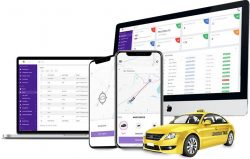Mobile App Testing and Quality Assurance in UAE: Best Practices
In today’s fast-paced world, mobile applications have become an integral part of our lives. Whether it’s for social networking, online shopping, or managing finances, we rely heavily on mobile apps. With such reliance, it is crucial for businesses to ensure that their mobile apps are of the highest quality to provide a seamless user experience. This is where mobile app testing and quality assurance come into play. In this article, we will delve into the best practices for mobile app testing and quality assurance in the United Arab Emirates (UAE), focusing on optimizing your app’s performance, functionality, and usability.
Understanding Mobile App TestingThe Importance of Mobile App Testing
Mobile app testing is a critical process that helps identify and resolve potential issues, bugs, and performance bottlenecks before releasing an app. It involves a series of tests to evaluate the functionality, usability, compatibility, and security aspects of the app across different devices, platforms, and networks. Effective mobile app testing not only ensures a smooth user experience but also safeguards a company’s reputation and revenue. For mobile app developers in Dubai, it is especially crucial to prioritize thorough testing to meet the high standards expected in the competitive market. By conducting comprehensive mobile app testing, developers in Dubai can ensure that their apps meet the specific requirements and preferences of users in the region.
Types of Mobile App Testing
-
Functional Testing: This type of testing focuses on evaluating the app’s features, such as navigation, user interface, data input/output, and overall functionality. It ensures that the app performs as intended and meets the requirements defined during the development phase.
-
Performance Testing: Performance testing aims to assess how well the app performs under various conditions, including high user loads, limited network connectivity, or low battery situations. It helps identify performance bottlenecks and optimize the app’s speed, responsiveness, and resource consumption.
-
Usability Testing: Usability testing evaluates the app’s user-friendliness and the ease with which users can interact with its interface. It involves conducting real-world scenarios to gather feedback on the app’s intuitiveness, navigation, and overall user experience.
-
Compatibility Testing: With a wide range of devices, operating systems, and screen sizes available in the market, compatibility testing ensures that the app functions correctly across different platforms and configurations. It helps identify any issues related to device-specific features, screen resolutions, or operating system versions.
-
Security Testing: In an era of increasing cybersecurity threats, security testing is crucial for mobile apps. It involves identifying vulnerabilities, securing data transmission, preventing unauthorized access, and protecting against potential risks such as data breaches and malware attacks.
Best Practices for Mobile App Testing in UAE1. Test on a Diverse Range of Devices
Given the diversity of devices used in the UAE, it is essential to test your app on a wide range of smartphones, tablets, and operating systems. This ensures that your app functions seamlessly across different devices and screen sizes, providing an optimal user experience to all users.
2. Consider Network Variability
The UAE has a variety of network providers with varying coverage and speeds. To ensure your app performs well under different network conditions, conduct network testing. Test your app’s functionality and responsiveness in scenarios with low network connectivity, high latency, or limited bandwidth to provide a consistent experience to users regardless of their network environment.
3. Optimize Performance for Local Requirements
The UAE experiences high temperatures and extreme weather conditions, which can impact device performance. Consider optimizing your app’s performance to handle temperature variations and reduce battery consumption, as users in the UAE rely heavily on their mobile devices throughout the day.
4. Localize and Adapt to the Arabic Language
As a predominantly Arabic-speaking country, it is essential to localize your app and provide support for the Arabic language. Conduct thorough linguistic and cultural testing to ensure that the app’s content, interface, and user interactions are tailored to the preferences and expectations of the local user base.
5. Prioritize Security and Data Privacy
In the UAE, data privacy and security are of utmost importance. Ensure your app complies with local data protection regulations and implement robust security measures to safeguard user data. Regularly conduct security audits, penetration testing, and encryption reviews to proactively identify and address potential vulnerabilities.
6. Leverage User Feedback and Analytics
Encourage users in the UAE to provide feedback on your app’s performance, features, and usability. Analyze user feedback and leverage app analytics to gain insights into user behavior, identify areas for improvement, and make data-driven decisions to enhance the overall quality of your app.
7. Conduct Localization Testing
Localization testing goes beyond translating the app’s content into Arabic. It involves adapting the app to the cultural norms, preferences, and expectations of the UAE audience. Test the app’s localized features, including date and time formats, currency symbols, and culturally sensitive content, to ensure a seamless user experience.
8. Test App Performance in High-Traffic Scenarios
The UAE is a bustling hub of business and tourism, often experiencing high traffic volumes in popular areas. Test your app’s performance under heavy user loads to ensure it remains responsive and functional during peak usage periods. This includes stress testing, load testing, and performance monitoring to identify any bottlenecks that may impact the user experience.
9. Incorporate Accessibility Testing
Accessibility is a crucial aspect of mobile app development. Test your app for accessibility features, such as support for screen readers, proper color contrast for visually impaired users, and intuitive navigation for individuals with disabilities. By ensuring your app is accessible to all users, you create a more inclusive and user-friendly experience.
10. Perform Cross-Browser Testing
In addition to testing your app across various devices, it is important to consider different web browsers used by the UAE audience. Conduct cross-browser testing to ensure compatibility and consistent performance across popular browsers like Chrome, Firefox, Safari, and Edge. This ensures that your app functions optimally, regardless of the browser being used.
11. Validate App Store Guidelines
If you plan to distribute your app through app stores, ensure that it complies with the guidelines and requirements set by the respective app stores. Each app store may have specific regulations and criteria for publishing apps, including content policies, design guidelines, and security measures. Adhering to these guidelines will help streamline the app submission process and improve its chances of being accepted.
Conclusion
Mobile app testing and quality assurance are essential processes to ensure the success and user satisfaction of your app in the UAE market. By following the best practices outlined in this article, you can optimize your app’s performance, functionality, and usability across different devices, networks, and user preferences. Stay ahead of the competition by delivering a seamless user experience that meets the specific requirements and expectations of the UAE market.
Remember, successful mobile app testing and quality assurance are ongoing processes that require continuous improvement and adaptation. Stay updated with the latest industry trends, emerging technologies, and user feedback to keep your app at the forefront of the rapidly evolving mobile landscape.






















































